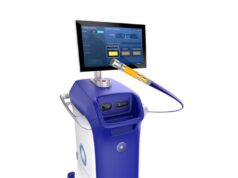
By Anne M Gillis
As an electrophysiologist treating a range of heart rhythm disorders, my primary objective is to determine the most appropriate treatment options for a patient. Aside from the specific treatment strategy, I am also very concerned about the best ways to inform a patient about their condition and provide as much support as needed.
While each patient is different, I find that many patients are not well versed on heart rhythm disorders, in particular, they lack knowledge about treatment options when they are first diagnosed. A survey from the Heart Rhythm Society shows that the majority of Americans are still unaware of heart rhythm disorders and the types of treatment options available. In my opinion, education is the most essential step to addressing the lack of awareness. For most patients, the combination of a team of healthcare professionals working together and the support of family, friends and patient groups will help better educate them and lead to a more successful outcome.
At the Cardiac Arrhythmia Program in Calgary, when patients are referred to us for heart rhythm disorders such as supraventricular tachycardia, atrial flutter, atrial fibrillation, or ventricular tachycardia, we have educational tools to inform the patient of their disorder and the risks and treatment options that are available. For example, when a patient is first referred to our atrial fibrillation clinic, the patient is assigned to a team of healthcare professionals to initiate their path to treatment. Prior to meeting with an electrophysiologist, the patient will have several touch points, including an opportunity for education about atrial fibrillation.
Firstly, nurse clinicians review the patient’s information and then send them a packet of educational materials, including descriptions on what atrial fibrillation is, what it feels like, what the risks are and details on different treatment options. Then, we invite the patient and their family to attend education classes where nurse clinicians focus on the scope of atrial fibrillation, drug therapy and all available treatment options. We include a question and answer session and opportunities for one-on-one discussions between the patient and individuals within the healthcare team. Classes are set up to encourage patients and their family members to be engaged and understand the specifics of their heart rhythm disorder.
After participating in classes and reviewing information on their own, a patient then meets with their physician. Preparing for the physician appointment in this way allows for a more interactive and dynamic conversation between the patient and physician. The patient can come to the appointment prepared with questions that are specific to their needs, instead of hearing about their condition for the first time.
We have found that through this type of approach, a patient becomes much more informed about their condition. The patient has the support of their family members who also understand the situation, and are more able to speak with the healthcare professionals and others who are going through the same process. It helps if the patient understands that every case is different, and therefore, treatment will vary depending on the individual’s situation and that treatment may change over time.
For further education and support while managing their condition, I encourage patients to seek out support groups like StopAFib.org, Arrhythmia Alliance, and STARS (Syncope trust and reflex anoxic seizures) who also offer educational resources to help individuals better understand their arrhythmia. In addition, when organisations such as the Heart Rhythm Society conduct awareness campaigns on specific conditions, such as atrial fibrillation and sudden cardiac arrest, they offer additional resources for patients and aim to educate individuals who may not be dealing with a condition but know someone who is, or may be at risk themselves but have not yet realise it.
Overall, we must all work together to reduce the lack of awareness related to heart rhythm disorders and this can be accomplished through education. Education not only empowers patients to play a more active role in their own healthcare, but also helps spread the word to those who may be caring for or know of someone with a serious heart rhythm disorder. The more we can do to help inform patients and their families, the better off we all will be.
Anne M Gillis is the 2012–13 President of the Heart Rhythm Society. She is also a professor of Medicine at the University of Calgary, Canada.









